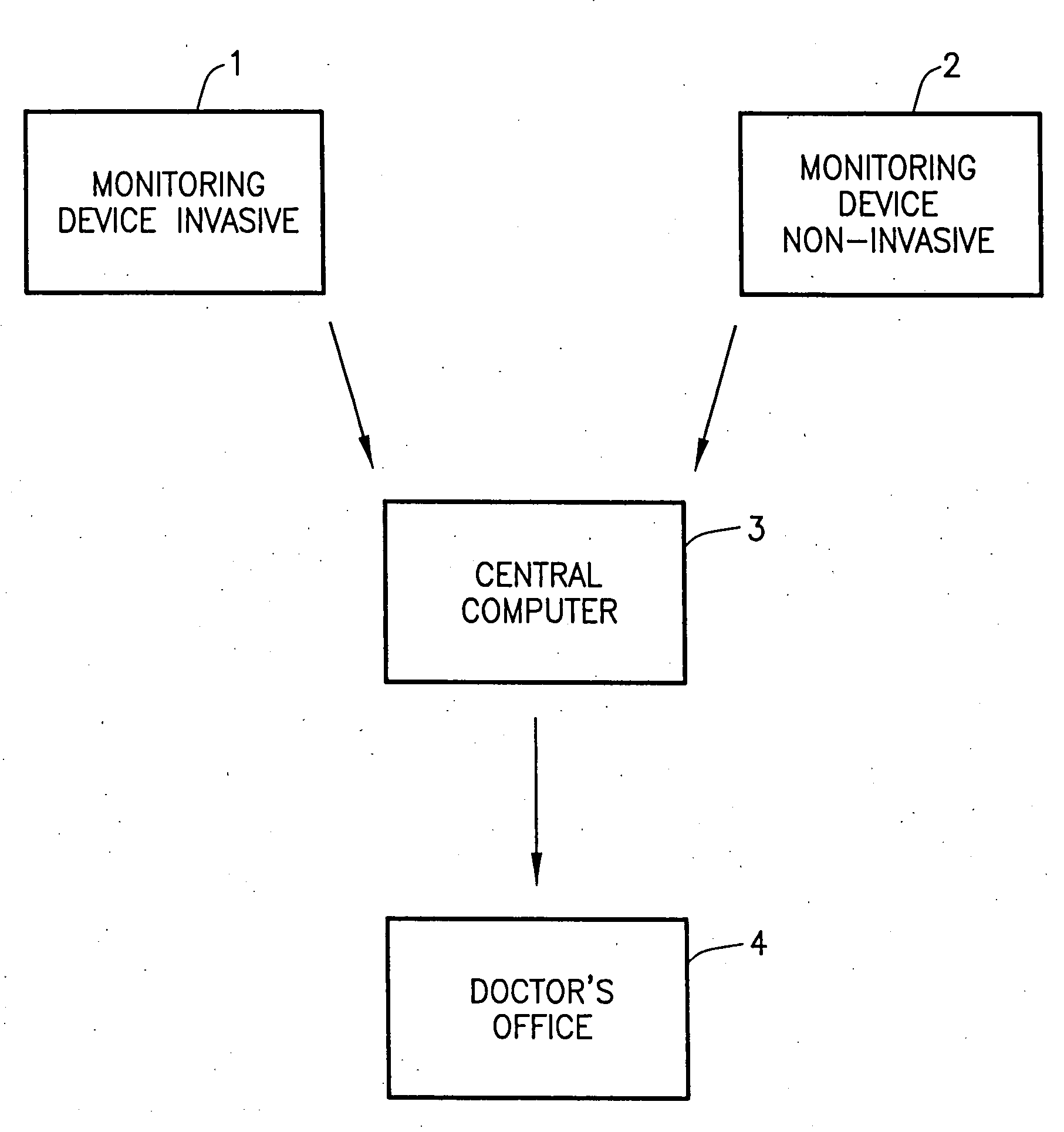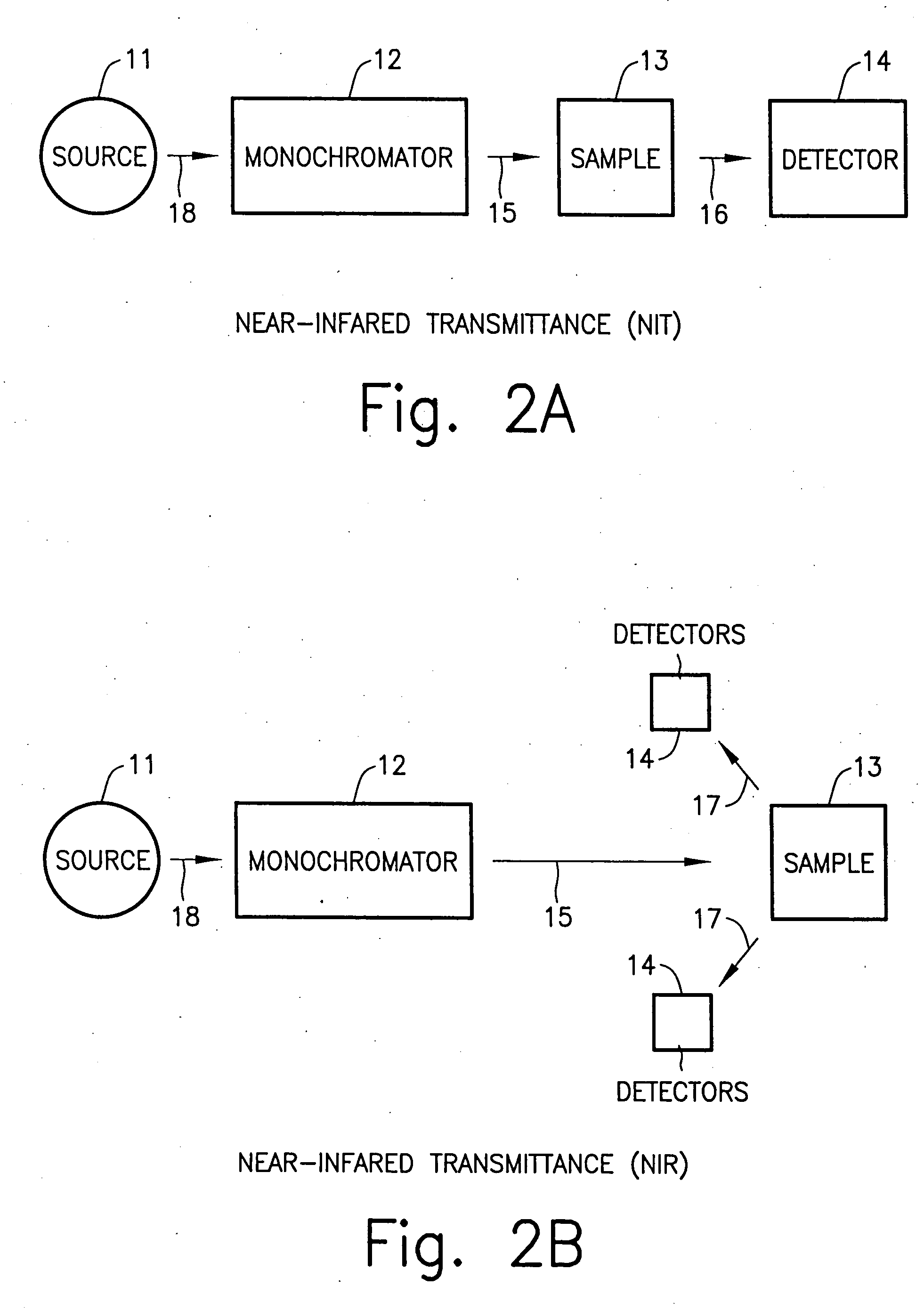Wireless blood glucose monitoring system
a monitoring system and wireless technology, applied in the field of near infrared spectrometry, can solve the problems of inability to have a scientist directly consult, and achieve the effect of accurate prediction of blood glucose levels, reduced invasive monitoring, and robust and accurate modeling equation
- Summary
- Abstract
- Description
- Claims
- Application Information
AI Technical Summary
Benefits of technology
Problems solved by technology
Method used
Image
Examples
first embodiment
In accordance with the present invention, a plurality of data transforms is then applied to the set of spectral scans. Preferably, the transforms are applied singularly and two-at-a-time. The particular transforms that are used and the particular combination pairs that are used are selected based upon the particular method that is being used to analyze the spectral data (e.g. diffuse reflectance, clear transmission, or diffuse transmission as discussed in the detailed description). Preferably, the plurality of transforms applied to the spectral data includes at least a second derivative and a baseline correction.
In accordance with a further embodiment of the present invention, transforms include, but are not limited to the following: performing a normalization of the spectral data, performing a ratio on the spectral data, performing a first derivative on the spectral data, performing a second derivative on the spectral data, performing a multiplicative scatter correction on the spe...
example 1
A clinical study of seven patients was conducted over five weeks. Testing occurred once a week, as discussed below. At each time point, a fingerstick was taken and read on a Hemo-Cue® blood glucose analyzer (invasive blood glucose level) to obtain a constituent value, and a near IR reading was taken at the base of the thumb (non-invasive spectral scan used to predict blood glucose level).
For each individual patient, readings were performed at various times in relation to eating. The first reading was taken in the morning following a fast of at least eight hours. Immediately following the taking of the first reading, the patients ate a full meal. The second reading was taken at approximately 30 minutes after eating. Subsequent readings were taken approximately every 30 minutes up to and including 150 minutes after eating for a total of six readings (in some instances, a seventh reading was taken at 180 minutes after eating).
The near IR reading was taken with a model AP 1365-II R...
PUM
 Login to View More
Login to View More Abstract
Description
Claims
Application Information
 Login to View More
Login to View More - R&D
- Intellectual Property
- Life Sciences
- Materials
- Tech Scout
- Unparalleled Data Quality
- Higher Quality Content
- 60% Fewer Hallucinations
Browse by: Latest US Patents, China's latest patents, Technical Efficacy Thesaurus, Application Domain, Technology Topic, Popular Technical Reports.
© 2025 PatSnap. All rights reserved.Legal|Privacy policy|Modern Slavery Act Transparency Statement|Sitemap|About US| Contact US: help@patsnap.com



